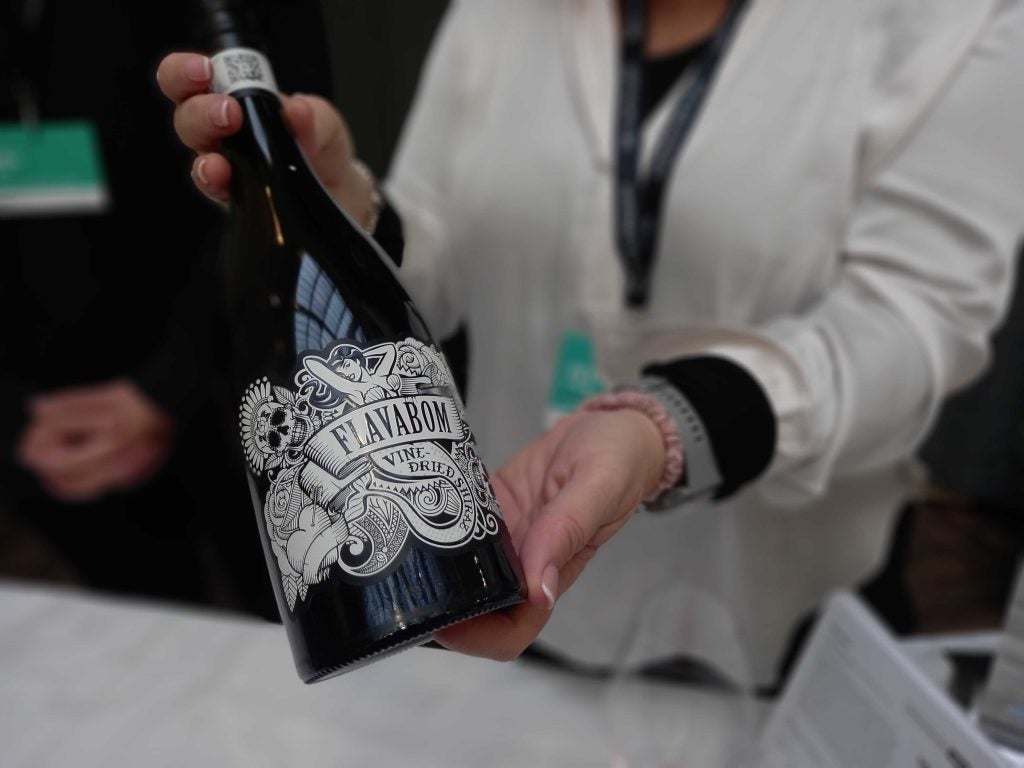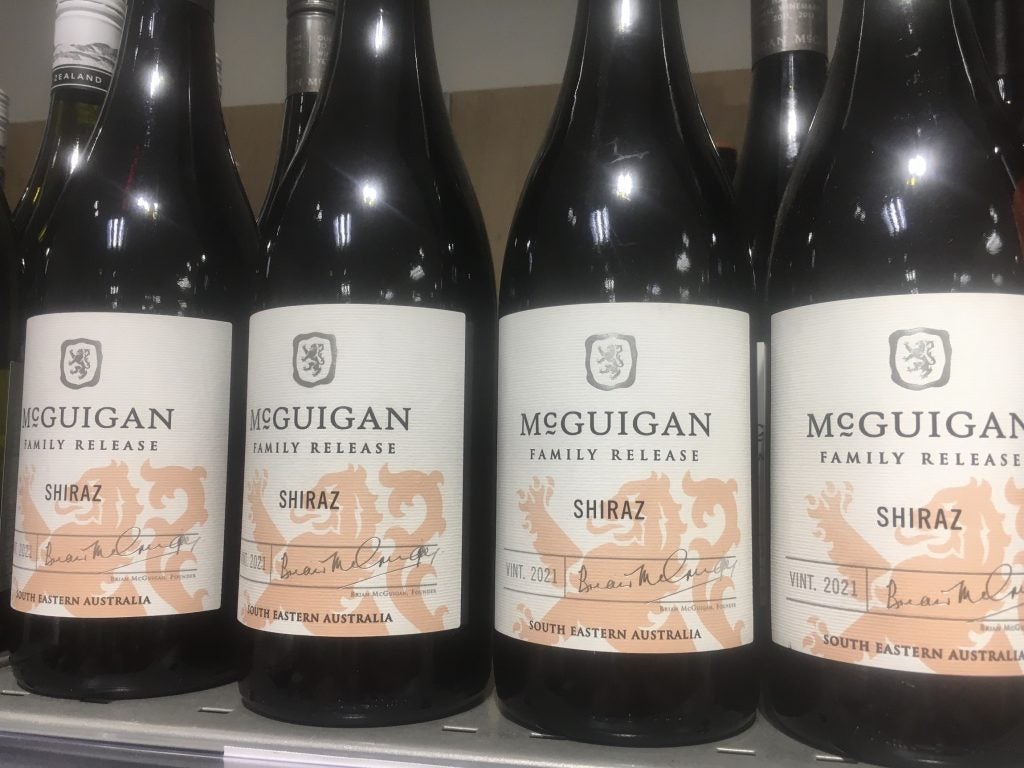
When China and Australia patched over a three-year trade hiatus in March, Treasury Wine Estates had containers on the water from Australia within five days.
Those wines are due to clear Chinese customs at some point in May. Treasury has also been reallocating cases of its coveted Penfolds brand from unspecified countries to China.
Ian Ford, founding partner of Hong Kong-headquartered drinks consultancy Nimbility, predicts a potential “gold rush” reaction to the renewed availability of Penfolds in China that could lead to temporary oversupplies in inventories which have only recently recovered from lengthy lockdowns.
But amidst the flurry of activity lies learned caution.
As Mark Lewis, founder of Cape Landing in Margaret River, put it to Just Drinks earlier this year: “Once bitten, twice shy.
“The big lesson for Australia is don’t have your eggs too tied up in the Chinese egg market because they’ve shown they can be unpredictable.”

US Tariffs are shifting - will you react or anticipate?
Don’t let policy changes catch you off guard. Stay proactive with real-time data and expert analysis.
By GlobalDataPutting political disputes aside, there have been structural changes to China’s wine market since China imposed anti-dumping tariffs on Australian exports and annulled its free-trade agreement – not least of which being that people are drinking less wine.
China has also implemented a number of regulatory changes that affect wine exporters, inflation is dampening consumer confidence and countries like Argentina have edged in and won listings from Australian producers during their absence – with competitive pricing.
So is a resurgence of China as the country’s top market possible – or desirable?
China’s thirst for Australian wine
Many of the challenges facing China’s wine sales are not unique: consumer confidence is “wavering”, Ford says, while discretionary spending on and consumption of alcohol has decreased.
Approximately 24.7% less wine was consumed in 2023 compared to 2022 while imports declined for the sixth consecutive year, dropping 26.1% in volume to 2.5m hectolitres and 21.7% to €1.1bn ($1.18bn), according to the OIV.
“The China wine market is unlikely to boom again any time soon,” Ford warns.
Business entertaining and gifting – “important segments of the market” – have also been hit.
However, Ford says “grassroots” consumer interest in imported wine remains and predicts the decline in shipments to China has “largely bottomed out” – with the revival of trade with Australia potentially providing an “inflection point”.
“There is a readiness to embrace Australian wines once more amidst hopes that it could help reinvigorate the decline in imports over recent years,” adds Matt McCulloch, CEO of Barossa Valley’s Langmeil Winery.

Though some have suggested Chinese wine drinkers have moved on from the big reds Australia based its exports on, Ford describes “a lot of enthusiasm across the market” for their return.
“China is still largely a red wine market,” he says. He predicts wine shipments to China will grow “modestly” in the next three-to-five years, at an average growth rate of approximately 10-12% a year.
Like Ford, McCulloch says Chinese customers still have a desire for Aussie-style reds. “Chinese consumers did not fall out of love with Australian wines; they were simply denied access to them at reasonable prices during the tariffs,” he says. “There is still a preference for generous and intense red wines with deep colours and rich fruit flavours, which Australia is renowned for.”
Slow and steady
Expectations of the time it will take for wine trade to get going again vary but bets seem to be hedged on two years plus.
While Accolade Wines did not wish to comment for this piece, when the news was announced in March it said it did not anticipate a “snap back” to 2020 sales levels.
Australian wine exports to mainland China peaked in 2020 at A$1.3bn ($0.85bn) and 121 million litres (recorded in the 12 months to October). By comparison, in the 12 months ended December 2023 exports stood at 1.4 million litres, valued at A$10.1m.
The number of exporters to the market decreased from 2,198 in 2020 to 117 last year, according to data from trade body Wine Australia.
McCulloch says Australian wineries and bulk wine brokers have seen a significant increase in interest from Chinese importers since the tariff removal but thinks it could take one-to-two years before Australia “can reinforce our premium positioning”. He does, however, think China has the potential to be Australia’s number-one export destination again.
Langmeil maintained relationships with its importers during the tariff regime and its first shipment is scheduled for the start of May.
Despite excitement from Chinese wine importers wanting to reintroduce the wines to their portfolios, McCulloch predicts wineries will be circumspect when it comes to deal signing this time around – “with an emphasis on securing reliable, long-term partnerships over short-term volume-driven opportunities”.
For those without importer contacts, Ford says getting wines on shelves and standing out as a wine brand is hard.
“The market is crowded with brands trying to succeed but the number of reliable and professional import partners is relatively low,” he says.
“There are a host of regulatory and logistical hurdles to have to overcome as well, including trademark registrations, Chinese back labels, customs registration.”
He adds online platforms such as WeChat, Red Book and Taobao provide “dynamic and fertile ground for selling wine and growing brands” but the online space is “complicated territory”.

In the short term, McCulloch says wine shipments could be driven by volume due to significant oversupplies in certain regions of Australia – particularly South Australian regions like the Barossa Valley.
Once Australia has got to grips with wine oversupplies “value rather than volume will be the key driver”, he says. “With a systemic global oversupply of entry-level wines, there will be fierce competition in this market segment,” he adds.
Too little, too late for some
Those raising glasses to renewed trade only tell one side of Australia’s present situation.
South Australia emerges battered and bruised from the tariff period, with growers going out of business and regional discussions ongoing on how to sustain the industry.
Last month, Accolade Wines offered its growers a buy-out clause to reduce its volume requirements as it attempts to stem historic wine oversupplies. The group told growers it was the “only option that allows [the CCW co-operative’s] growers and Accolade to remain viable”.
Earlier this month, the South Australian government announced a support package of up to A$1,500 ($992) “to accommodate routine costs”.
An extra A$60,000 will be offered to the state’s Rural Business Support unit to set up financial counselling, while the ethephon vineyard resting trial has been extended – under which growers can test the application of a plant growth regulator to their vines.

Just before the tariffs were lifted, Australian wine trade body Riverland Wine called upon the country’s wine businesses to diversify export ambitions to avoid being stung again by China.
Commentators have criticised Australia’s wine industry for putting all its efforts into China to the detriment of large wine-drinking markets like the US and UK. Last year, those two countries alone formed over half of the country’s exports in volume terms.
Speaking to Just Drinks last year, Giles Cooke MW, managing director of Alliance Wine, said: “I would love to think that people won’t make the same mistake again, they will go back with caution and they will maintain their focus on growing a lot of mature, dependable markets whilst doing sensible business.
“In reality, there are a lot of people that are desperate to sell wine at the moment and they may well go back cap in hand.”
Riverland growers have also been campaigning for government aid to allow them to drop Shiraz and Cabernet Sauvignon grapes on the ground rather than adding to oversupplies.
Last year, McCulloch said he’d also heard of Barossa wineries – known as a ‘premium’ region – paying growers to drop fruit on the ground. “It’s happened in the Riverlands and other areas, but I haven’t seen that in the Barossa, not for a long time,” he said.
Does Australia need to make less wine?
The simple answer to long-term sustainability of the Australian wine market, says McCulloch, is to “grow, make, and export less wine”.
He says the country needs to aim for “greater stylistic diversity, higher quality and premium price points from sustainably accredited vineyards that deliver a viable return for grape growers and winemakers”.
But adds: “The complexity will be in the transition, which will not be pain-free. Our competitors in Chile, France, Spain and the USA face the same issues.
“The Australian Federal and State Governments should back the sector with support commensurate with the export dollars generated and in line with our global competitors.
“Unlike Australia’s biggest exports, coal and iron ore, every bottle of Australian wine on a shelf or a table overseas is a standard-bearer for our culture, food, lifestyle and tourism.”
Four years on, Australian exporters will find China a different market to the one it – almost – left. While Chinese customers will undoubtedly help siphon off oversupplies, Australia, sensibly, isn’t pinning all its hopes there.



